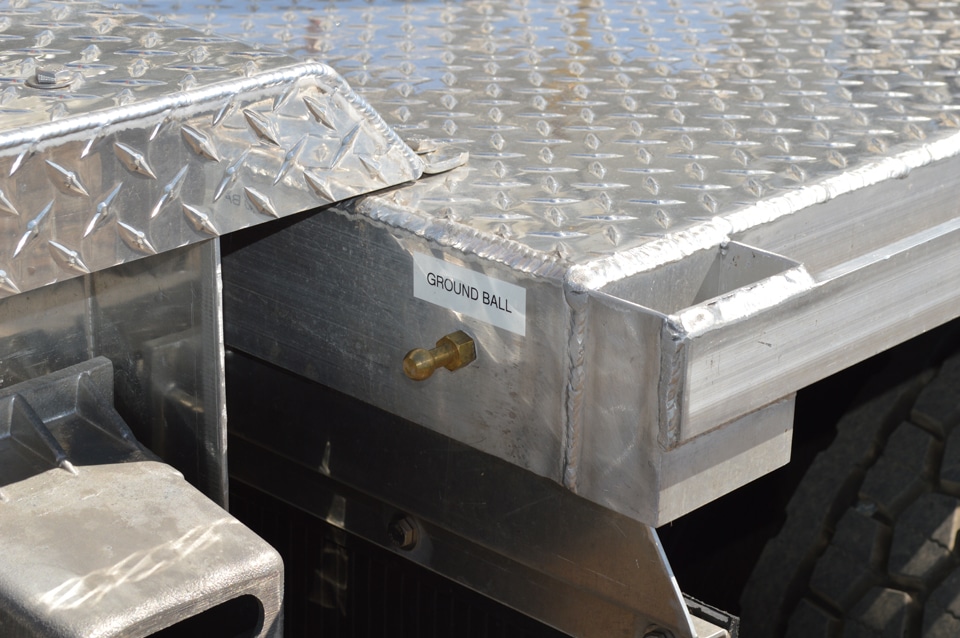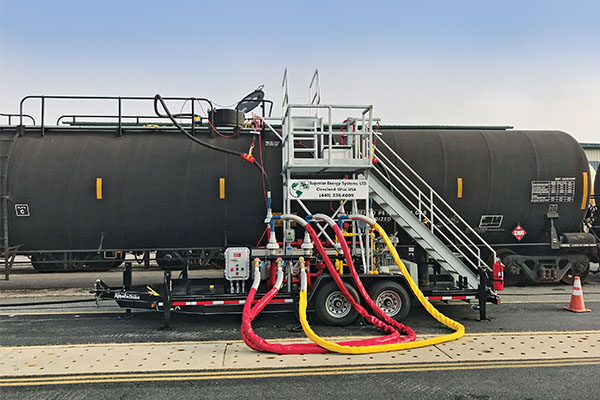
An insufficient number of railcars were available. In this time period, railways were still emerging as a viable form of transportation for goods. But it is believed to have started in the early 1900s. The history of transloading is long and not well documented. Without transloading, businesses sacrifice profitability and operational efficiency. Transloading has become a staple for many freight-essential businesses. Otherwise, they would have one sit around waiting to be picked up by the rail company. This is also beneficial because now they can utilize all three of their trucks for other deliveries. For example, if one company has five containers of goods that need to be picked up by a railway line but only three workhorse trucks are in its fleet, then it would make sense for them to transload those items onto waiting for railroad cars so all their cargo will arrive timely instead of potentially arriving late due to traffic or other unforeseen circumstances. In the freight business, transloading is transferring freight from one mode (mode of transport) to another. You’d be surprised how transloading can entirely change your business from the ground up. In this article, we will cover the benefits of transloading. Without transloading, you are left to your own devices. It’s easy to see why so many businesses choose to transloading as their preferred method of transportation. What this means for you, as a business owner, is that you will reduce your shipping costs, and your goods will arrive much faster than if more traditional methods had shipped them. Transloading is the process of moving freight from one mode to a second. You should be able to find this detail set at your local hobby retailer or one of the many online hobby shops.What Is Transloading and What Are It’s Benefits? It isn't difficult, or else these sets wouldn't be so popular. You will need to be able to remove the photo-etch parts from their frets (simple once you know how) and then be able to apply these details using cyano adhesives without gluing yourself to the kit parts.

While this set will really set off the detail in the ZIL-157 kit, this detail set is not for the beginning modeler. On the exterior of the cab, we have new brush guards for the headlights, mud flaps and bumpers for the rear of the vehicle, storage racks/brackets for the fuel cans, and even a metal cradle for the main fuel tank. Under the hood, we have a new engine fan, a fan shoud for the radiator, new details for the firewall, and even positionable folding hood panels. That takes care of the interior of the cab.
#Transloader on a trailer driver
The details include a new instrument cluster with acetate printed instruments, driver foot pedals, instrument bezels, storage racks, and interior cab door panels with with handles, window crank handles and the door latch handles. You can browse through the high resolution images to see hoe the details all come together. This set consists of two frets of photo-etched details. As far as I could tell, the only visible differences between the ZiL and its Chinese counterpart was the radiator grille - the Russian has vertical louvers, the Chinese has horizontal louvers. Actually, this set is focused on the area around the cab and engine hood, so this detail set would work well with the 'SA-2 w/Cabin' kit (the ZiL tractor and the SA-2 transloader trailer), the Chinese HQ-2 version of this same kit, the Zil-157 cargo trucks, or the Chinese versions of these same trucks.

This detail set is billed for the ZiL-157 SA-2 truck. What a difference! It is amazing what even the simplest details can do for the overall effect of a model. I remember seeing preview images of the ZiL truck with its door positioned open and looking at the inside of that door.

Well in this set, they've used the relief-etching process to great advantage. When Eduard first introduced the acetate-printed instrument faces that go behind their photo-etched instrument panels, this raised the bar on model cockpit reality as you could almost read the time on the aircraft clock.
#Transloader on a trailer series
Their series of photo-etched detail sets have brought additional fidelity to otherwise bland subjects, and have taken even the best-produced models and kicked them up a notch or two with details that cannot be produced with injection-molded plastic. Eduard from the Czech Republic is easily the most prolific producer of aftermarket details.


 0 kommentar(er)
0 kommentar(er)
